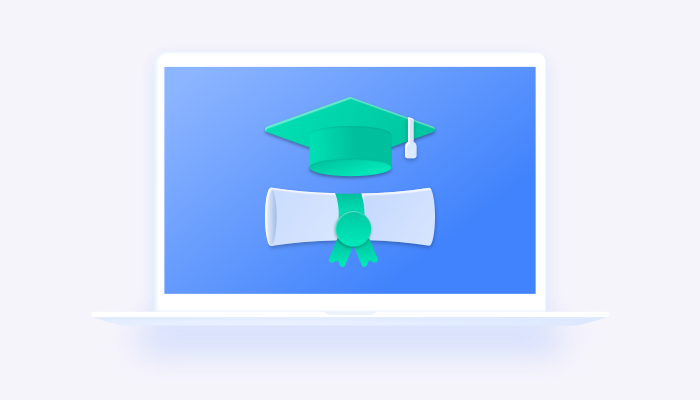
COVID-19 has changed the world forever, and education is no exception. The pandemic has resulted in schools shut all around the globe. This situation challenged the education system globally, and universities from different countries shifted to virtual classrooms because they were forced to close down. As a result, e-learning turned out to be universal, and remote educational apps have become more critical than ever.
Fortunately, modern technologies allow remote education to be as effective as face-to-face engagement. Many feature-rich educational applications can transform how students and teachers engage with each other. This high demand has resulted in the production and availability of many online education apps in the market.
QuickBlox highlights some of the features that every remote educational app should have for distance learning to be successful and productive.
Here are the must-have features of an advanced online educational app
- Session recording (audio/video recording)
An education app must support session recording to maximize student engagement, being more collaborative. Students can re-watch videos anytime and anywhere when they miss the session or revise the material to polish their skills. Tutors can give personal feedback on student’s work using video.
- Screen-sharing
Getting everyone on the same page is easy with screen-sharing. This feature is essential for the education app, allowing teachers to instantly share a desktop screen with students, for more effective and intuitive collaboration.
- File-sharing
With the file-sharing feature, tutors can add images, multimedia content, or other common files directly on chat. The content will be immediately available to all the students with access to that group. Students can always review, download, and upload the education materials and tasks easily. There is always a lot of student data, payments, lecture information, and schedules to share. It helps to reduce the time spent on recurrent tasks and promotes the focus on activities.
- In-lessons chat
In-lessons chat enables students to interact with the tutor as well as peers directly. This feature promotes real-time collaboration and discussion that can lead to a deeper understanding of essential material. The teacher gets feedback immediately, checking the responses in real-time. In-lessons chat features create an interactive learning experience, connecting students and teachers in a virtual classroom complete with collaboration and communication tools.
- Adding participants to an ongoing call
This feature allows adding participants to the ongoing session while you’re still talking, rather than having to hang up and manually add teachers or students into a conversation before restarting the call.
- Live Streaming mode
Live streaming is the best way to connect with the audience. It allows a real-time interaction for students to access on-demand, giving more control over the content. A live stream is far more scalable to large groups for accessibility and mobility, and it is the best option to deliver educational content reaching more people at once.
- Chat admins
Chat admins feature enables tutors to be assigned as chat admins for group chats to have private conversations with students. It also allows the creation of multiple channels. Each student can be associated with a project, which allows filtering the content and options accessible for each group directly in an educational app. This feature will keep you informed about daily reports and any potentially offensive communications.
- Non-verbal feedback
Non-verbal feedback plays an important role in educational apps to enhance the user experience. The success of an education app depends mainly on personalized experience that engages the users. Establishing a hand signals system in an educational application is an excellent way for students to communicate their needs without disrupting the flow of learning. This feature also allows teachers to get a message across quickly and quietly.
- Polling
It helps to create an active remote classroom where students can progress and use all their devices. A wide range of flexible questions, discussions, and live polls allow educators to quickly boost students’ engagement. Participants can instantly see the responses up to the minute.
- Breakout rooms
Breakout rooms are virtual classrooms that let you split the class into various group sessions. The teacher can switch between the breakout rooms at any time to attend to different student groups. This feature allows us to animate class assignments, ensure learning is student-oriented. Educators also get a chance to monitor students’ progress remotely and use an individual educational approach to each group.
Build your online education app with QuickBlox
Needless to say that remote education requires a reliable tool that makes online communication and face-to-face interaction as human as it can be, creating a healthy environment between students and teachers. The features mentioned above are the most essential to consider when building an online educational app to provide learning from anywhere.
QuickBlox helps develop educational applications supporting video & audio recordings, conferencing and video calling, file & screen-sharing, and other important features. Using our developer-friendly messaging APIs and SDKs, it’s simple to quickly build encrypted education apps for iOS, Android, or web applications.
Quickblox also offers one of the best remote collaboration tools to stay efficient and ensure productivity in the education sector. With our Q-consultation solution, you can and immediately deploy your educational app. Q-consultation is a ready-to-use web app that supports essential communication features remote users may need. Such as high-quality audio/video calls, text chats, emojis, groups, and file sharing end-to-end encryption and much more. Check it out for yourself now!
Contact us to discuss the details.








